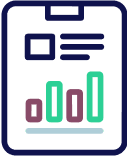ARTICLE
Churn Prevention in SaaS: How to Retain Customers?

Customer churn is a big challenge that SaaS faces. It reduces revenues and increases CAC, which makes economic growth hard for businesses. Several studies already proved that the treatment of keeping an already existing customer is much more cost-effective compared to acquiring a new customer. Therefore, the churn prevention strategy becomes very important.
High churn can mean that users don’t feel there’s enough value in the product, or there are usability issues or problems with customer support. The reasons for customers churning, and ways in which effective retention strategies can be implemented, give a SaaS business the guarantee that it moves toward better customer satisfaction, increase in LTV, and thus long-term success.
Understanding Churn in SaaS
Churn in this context means when customers cancel or are otherwise unable to use the service, voluntarily or otherwise. Voluntary churn is one case where active users deliberately cancel subscriptions because of dissatisfaction or anxiety about the price or perceived value. Involuntary churn is largely due to reasons related to failed payments, expired credit cards, or some technical problems that barred customers from continuing their subscriptions.
Of course, some churn will always be unavoidable, but it should be a top objective for any SaaS company to minimize it. The trick to avoiding churn altogether is being able to spot customers in jeopardy early on and using proactive measures to re-engage them.
Strategies to Avoid Churn
1. Improve Customer Onboarding/Training
It shows that one would face a not-so-great onboarding process that contributes to churn by reason of lack of ease regarding product usability. Any onboarding, in some basic structure, will give an important focus on revealing feature valuable, quicker routes of benefit understanding, and pathways toward end users.
And it could be smooth with interactive tutorials, video guides, and in-app tooltips guiding them through onboarding. For high-value customers, personalized onboarding services might include one-on-one calls and a dedicated account manager to increase retention rates.
2. Keep Customer Behavior and Engagement on Record
It’s very important to track user activity; this helps in understanding the potential risk of churn. Customers who suddenly stop using, fail to complete key actions, or stop logging in altogether may be on the verge of canceling their subscriptions.
Using analytics tools to track user behavior helps SaaS companies identify early warning signs. For instance, if a customer hasn’t used a core feature in weeks, sending them an email with usage tips or offering a personalized demo can help re-engage them.
3. Provide Exceptional Customer Support

Poor support comes either slowly or never users and contributes to an increased churn rate. Fast quality support means the customer gets exactly what they need when they need it.
Offering omnichannel support through live chat, email, and phone support will help meet the different customer preferences. AI-driven chatbots also help with a lot of problems so that human agents can attend to more challenging ones. These usually relate to SaaS companies that will see increased customer satisfaction and customer retention.
4. Address Payment Failures and Involuntary Churn
Involuntary churn includes those people whose service should not have been canceled due to failure to process payments. This adds up to a lot: customers forgetting to update their information, credit cards expiring, or payment processing failing.
Automated retries of failed payments, email reminders for expiring cards, and ease of updating billing details at any time in the user experience will go a long way toward minimizing involuntary churn. A dunning management system can also do this by handling failed payments in an automated fashion and sending out follow-up messages to recover lost revenue.
5. Collect and Act on Customer Feedback
Understanding their reasoning for churning is key to improving customer retention. Feedback through regular surveys, in-app pop-ups, or exit interviews is very important and provides immense value in understanding the pain points or areas of improvement.
For example, if many users complain that something is hard to use, investment in UI/UX could help customers have a better experience and lower the churn rate. Such an attitude toward customer feedback will support product improvements, plus show users that they are taken care of.
6. Establish Incentives for Loyalty and Retention Offers
Loyalty programs and retention incentives can encourage customers to stay longer. Offering discounts for annual subscriptions, exclusive features for long-term users, or referral bonuses can strengthen customer relationships and reduce churn.
Moreover, SaaS companies can use win-back campaigns to retain customers who are considering canceling. For example, sending a personalized email with a special discount or a free consultation can convince users to give the product another chance.
7. Continuously Improve Product Value
Customers are more likely to stay subscribed once they see that the product keeps improving and adding new innovative things. Regular feature updates, bug fixes, and the addition of new functionalities in regard to users’ needs might keep customers active.
Having a clear product roadmap, and even getting people psyched about new features coming in email newsletters or in-app notifications, helps to keep users excited about the service’s future. When there is visible ongoing value, customers are much less likely to churn.
Conclusion
SaaS business growth and profitability are driven by churn prevention. Onboarding improvement, customer activity tracking, fantastic support, preventing payment collection failures, collecting feedback, offering incentives, and continuous product improvement are how SaaS companies will build a good relationship with the users and prevent churning.
This proactive approach toward customer retention helps to keep revenue stable and fosters long-term brand loyalty. In the end, serious attention to churn prevention means that SaaS companies will ultimately enjoy higher customer satisfaction, increased lifetime value, and sustained growth within an increasingly competitive market.
















